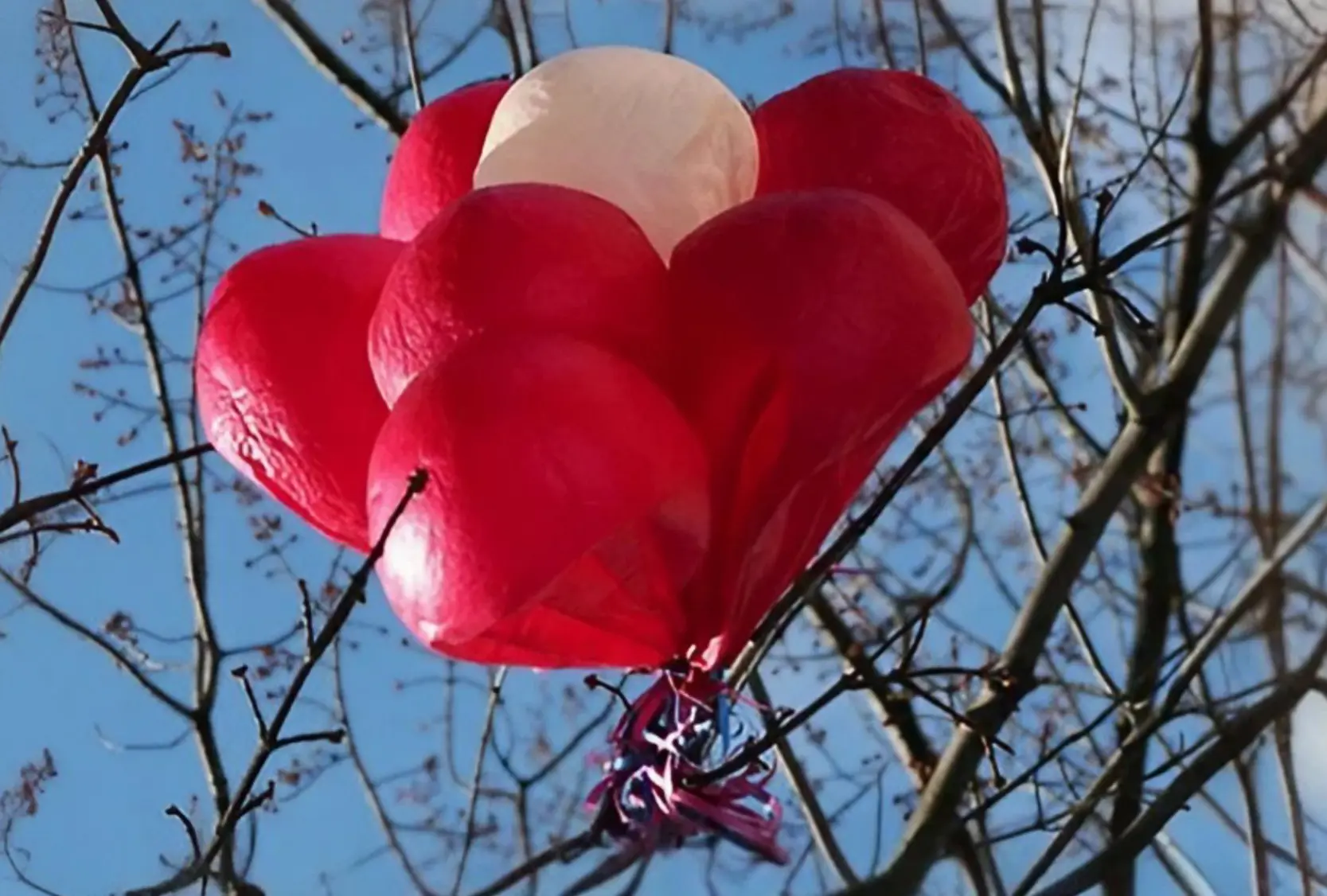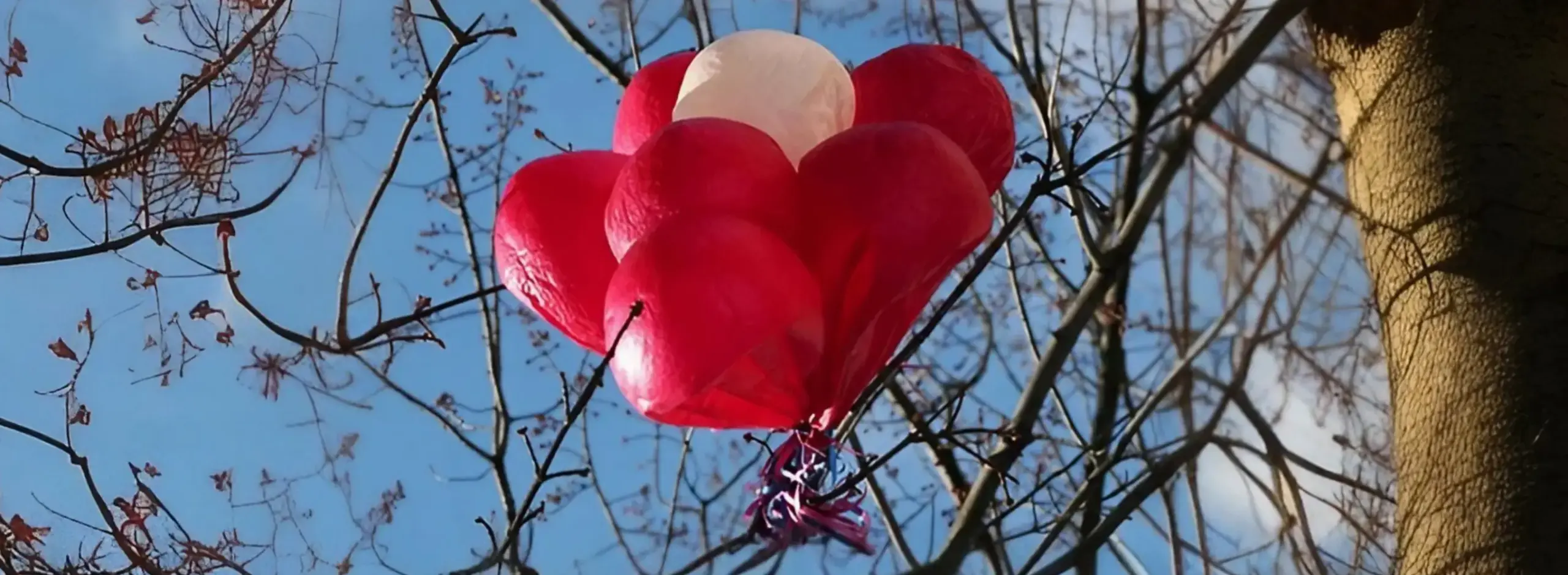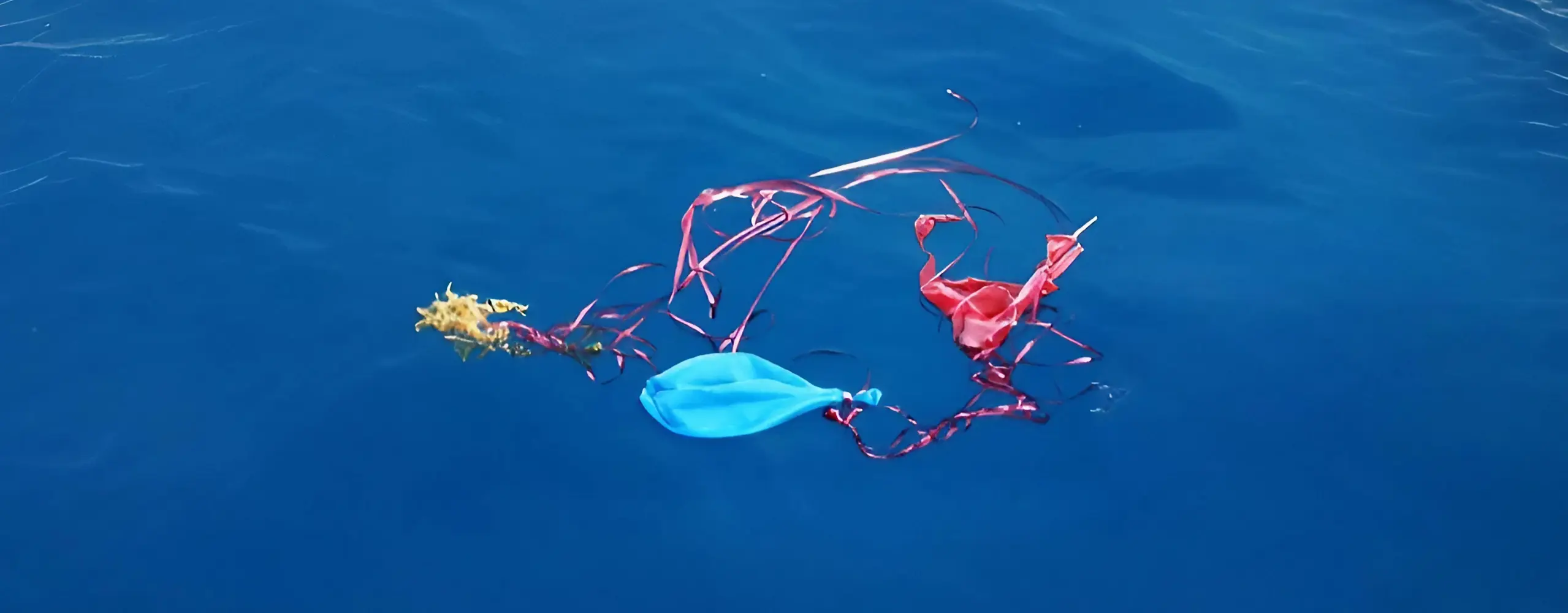Releasing helium balloons might appear enchanting at first glance, but behind the perceived lightness lies a significant environmental concern.
Sooner or later, these balloons succumb to gravity and find their way into trees, bushes, or water sources, endangering wildlife and ecosystems.
It’s a real environmental threat, often underestimated.


“Why, it’s just natural l atex…”
“Even with natural latex, the suffering for animals remains the same. When the balloon ends up in nature and animals ingest it, they starve from it.”
Lisann Sander, NABU
It’s often argued that only balloons made from natural latex, which is biodegradable, are used. The comparison to an oak leaf is frequently made: a natural latex balloon would decompose just as swiftly as an oak leaf. However, those familiar with the matter recognize that this comparison was purposefully selected by the industry: oak leaves are highly durable and decompose slowly.
A latex balloon becomes brittle on land after 8-10 weeks, and in water, it remains soft and flexible for over 5 months. Thus, both on land and in water, there’s plenty of time for balloons to find their way into the stomachs of animals or become entanglement hazards for creatures that get caught in the remnants and strings. Even if the balloons are made of latex, the strings typically aren’t biodegradable.
Moreover, balloons contain various toxic substances such as plasticizers, and their production generates carcinogenic nitrosamines. These substances enter the environment or directly into humans, especially as balloons are often blown up with the mouth.
Source: B.U.N.D.
*Study by the University of Tasmania in Australia, 2019


No Nourishment Found
Marine creatures can misinterpret a floating balloon for a tasty jellyfish, ingest it, and ultimately starve due to the rubber obstructing their digestive system. Seabirds frequently become entangled in balloon strings, leading to a lingering demise.
Source: Sea Shepherd Germany
Based on the analysis of waste collection efforts during the International Coastal Cleanup Day, the Ocean Conservancy ranks balloons as the third deadliest marine debris, trailing behind only plastic bags and fishing nets. Animals either become entangled in the strings or mistake balloons and their remnants for food, leading to ingestion. Once ingested, these items block the digestive system, resulting in starvation.
Source: B.U.N.D.
We’ve dedicated significant effort to developing our ecological alternative to balloons and are thrilled to see more people opting for our foam clouds.


Prohibition or Prudence? – our conclusion
We’ve compiled voices from environmental organizations here without adding our own commentary.
The significance of this issue is evident, and upon delving deeper, we’ve become acutely aware of the extent of its environmental impact.
We understand that not everyone has the time to delve into this topic extensively. Hence, we aim to contribute to raising awareness and hope to at least provoke thought. It’s crucial to act sensibly and reflect before releasing balloons, as they pose a potential threat to flora and fauna.
Collectively, we should explore sustainable ways to share our joy and celebrate special moments. Through mindful actions, we can contribute to protecting our planet and creating a better future for all of us.
Here at Schaumwolke, we support this endeavor and hope for numerous supporters to join us.